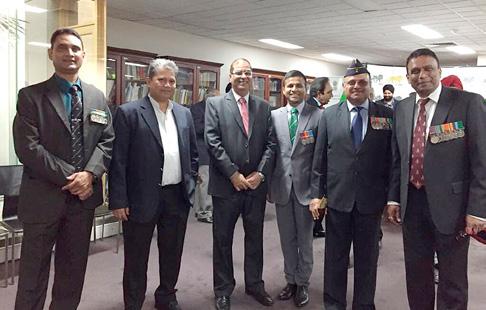
7 minute read
Indian Anzacs
from 2018-05 Perth
by Indian Link
Marching in memory of their forebears at Gallipoli, Indian veterans bring up the idea of a commemoration in India
BY RAJNI ANAND LUTHRA
Having participated in the ANZAC Day Parade for a few years now, many of those who march as part of the Indian contingent are beginning to feel that perhaps India should organise its own memorial event.
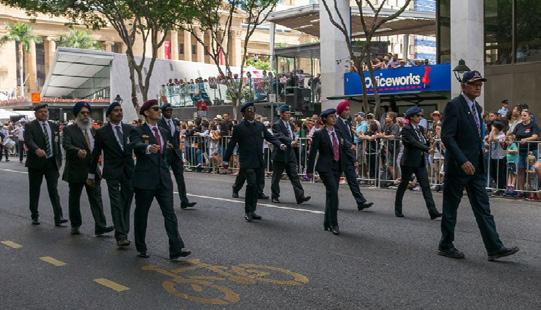
Indian involvement at Gallipoli in 1915 is now a well-recognised fact, with documentation including photographs and letters unearthed after many years. Some stralia and ew ealand an o to Gallipoli every year to lay a wreath to the memory of their soldiers, why shouldn’t India?” asks Col Nilesh Bansal (Retd), who has been a proud ANZAC Day participant in Melbourne since 2013. ve s o en to ndian o ials a o t this, ansal reveals, and a saddened to learn that apparently the Indian political system and bureaucracy do not recognise or honour conflicts that took place before 1947, considering the participants as ‘part of British forces’.”
1.3 million Indian soldiers served in World War I, and over 74,000 of them lost their lives, 1,400 of these at Gallipoli alone. Many were awarded the Victoria Cross honour.
Just the like the Aussies and New Zealanders, they fought a war in a strange land far from their own, and against an enemy they knew little about.
The Indian contingent at Gallipoli comprised the 7th Indian Mountain Artillery Brigade, 29th Indian Infantry Brigade, Indian Supply and Transport Corps, and the 108th Indian Field Ambulance, among others. They served there from late April 1915, through the st offensive, ntil the inal eva ation in December.
Major General Ranjit Nadkarni (Retd), Vishisht Seva Medal, who led the 20-strong Indian contingent at Melbourne’s ANZAC Day parade again this year, feels that the annual ceremony including the dawn service, parades and observances at RSL to honour our veterans, mean a lot to men in uniform. hese ere onies ive res e t to all armed forces personnel,” he tells Indian Link he are ade to eel a val ed section of the community. In India we don’t get such recognition, at least not to this extent.” e adds, wo ld li e to see so ethin of this nature in India, definitely. We do have the Republic Day ceremony but it is a i ed affair, with vario s other servi es and states taking part.”
In fact, taking a cue from the Australian observance of ANZAC Day, he goes a step further and says perhaps India should set aside an annual day to celebrate the nation’s military history. thin the r ed or es st e iven d e re o nition or their efforts, and their service remembered. The 1971 conflict, for example, in which I myself participated, created international history, giving rise to the birth of a new nation Bangladesh. And over and above their roles in conflict and border protection, the Forces take on many challenges as part of their humanitarian duties such as during natural calamities. The nation owes the Armed Forces. We should set aside a day for military personnel alone, besides Republic Day.”
The Indian Consulate in Melbourne hosts a lunch every year to honour the Indian marchers, and both Bansal and Nadkarni have expressed the sense of pride they feel, as members of the community – both Indian and mainstream – come up and greet them as military o ers who served their o ntr with devotion. o rse there are eo le who recognise and value our service in India also, ad arni reveals hen o to the bank in India for instance, I am amazed at the regard shown to me simply because I am a soldier. But there’s no public forum for such acknowledgment. I think it can be done: the retired community will happily work alongside the serving community to make this happen. Such a move will do the country proud, I feel.”
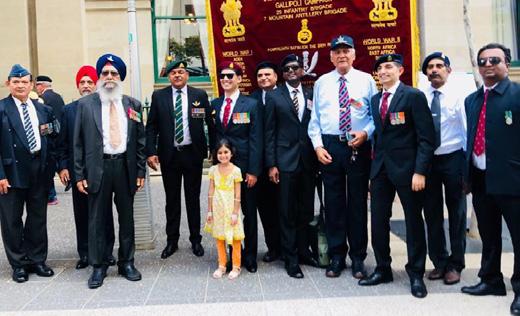
Gen Nadkarni served in the Indian r or ears s an n antr o er he saw action in the 1971 war as a young major, and later in Kashmir fighting terrorists.
As part of his long career he also served as Chief Instructor of the Army at the resti io s e en e ervi es taff olle e at Wellington, Tamil Nadu. ta ht ilitar histor and a ll aware of the battles that took place in alli oli in , he offers brigade the 1st Battalion of the Sikh Regiment was particularly active there and this is a great source of pride for me. The Gurkhas and others from India did their bit equally valiantly and we are proud of their service and sacrifice.”
Having marched in the ANZAC Day parade for the 11th year this year, he says, elt ro d to e ndian and an e ar o er elt ro d that there is so e recognition for Indian soldiers.”
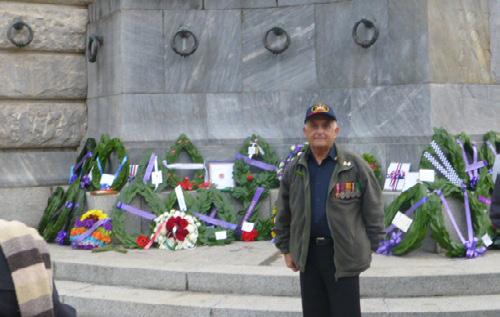
His words are echoed by Capt Johnny Joseph, who marched in Brisbane this year. here is no o asion in ndia to remember and honour the sacrifices our soldiers made in the two World Wars,” Joseph tells Indian Link nd that is why the ANZAC Day parade is significant to me. The Australians and the New Zealanders were in the forefront at this historic military operation no doubt, but our countrymen were there too, besides others of course like the South Africans. The annual parade today is our way of honouring, respecting and giving recognition to the Indian soldiers who fought and died there. The authorities tell us they were part of ‘British’ forces, but they were our men.” he ar ed or es ee s se re and the citizens come out in large numbers to hono r the , sa s a t ose h Even the Dawn Service I went to, at 4am, was crowded.” he hara ter o the a arade is different ro ndia s e li Day. It’s less structured, but the respect for the men and women in service comes through very strongly.”
Brisbane’s Indian contingent marched only for the second year this year, organised by Capt Joseph, formerly of the 8 Kumaon Regiment in India.
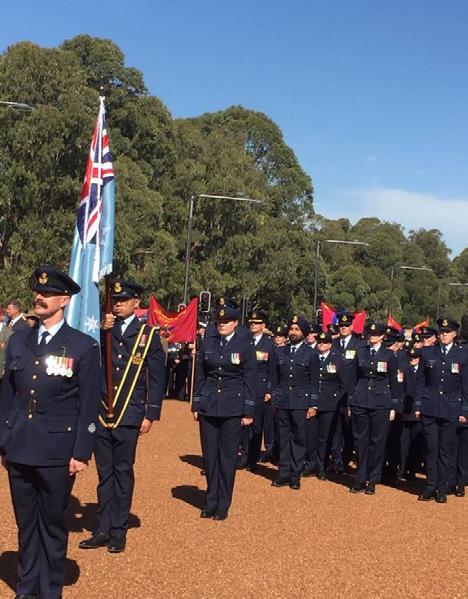
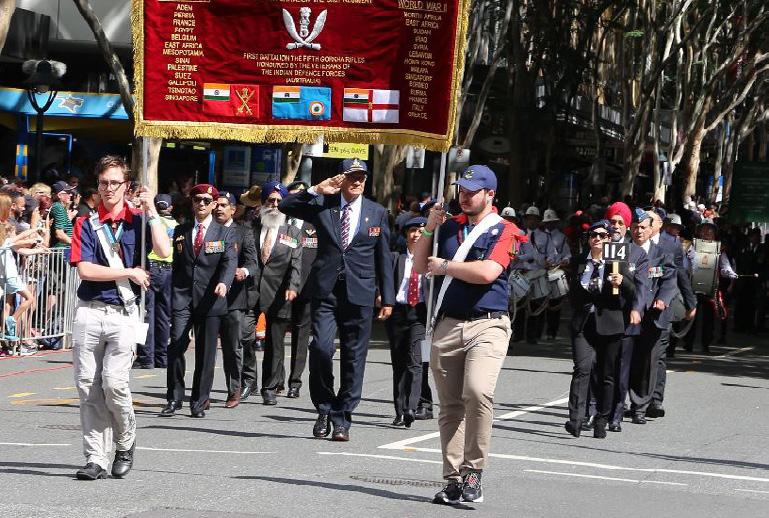
That the general public comes out in the thousands to cheer the marchers on, an holdin the than o la ards, is a arti larl war ta e awa r contingent is one of the last, and yet the crowds stay on,” Gen Nadkarni says with awe.
He speaks warmly about the contingent of descendants - some of them little children - who carry their family members’ portraits in memory.
Vickram Grewal marched for the first time as part of his RAAF unit in Canberra, where he serves as ire tor trate i Communications Sustainment. But this was not his first ANZAC Day parade. He has been marching since 2007, when the first Sikh contingent was permitted in the Sydney parade. As part of the Sikh Council of Australia, Grewal was instrumental in liaising with the RSL to establish a case by putting forward accounts from history of the Sikh participation in Gallipoli. hat i h le a st e re e ered and honoured,” he says with conviction. or et the oliti al as e t o it, the history is there for all to see. The awareness must be raised in India as well.”
The Sydney contingent that he helped put together marched this year with nearly 50 participants.
The appearance of the Dashmesh Band, an all-Sikh bagpipes band from Malaysia, made it even more special. The spotless white costumes, blended ingenuously with the red tartan and to ed off with the a esti pagris, created much allure for spectators and went a long way in showcasing the new diverse and inclusive nature of this quintessential Australian event.
No other Indian contingent has been accompanied by a marching band. ar hin ehind a and a es it even more special for us,” Bawa Singh Jagdev, who has participated in the parade for the past 11 years, tells Indian Link or the centenary year, we put in a request with the Indian High Commission to allow a band from the Sikh Regiments in India to accompany us in the parade. It would have been a wonderful acknowledgement of the Sikh participation in Gallipoli and would perhaps have helped in the bilateral relationship as well, but it was not to be.” o e in hono r o the allen, and to say thanks for the peace and harmony we live in today that came about as a result of their sacrifice,” he tells Indian Link. t also allows e to relive the e ories of my past, and in a way, fly the flag for my country.”
The Dashmesh Band has made two previous appearances at Sydney.
In Adelaide, Marvin Bunting has been paying his respects at the Dawn Service for 30 years, showing up in his Regiment Cap from 161 Medium Regiment (Basantar River), and wearing his medals.
He served in the Indian Army (artillery) for 12 years, and was posted in the J&K sector during the 1971 war. He left the Army in 1979. The Delhi-born Bunting is a third generation army man: his grandfather Tom Bunting went to India from Britain in 1900 as a soldier of the British Raj, and his father Trevor served in the Air Force.
Returning to India only months ago on the occasion of the 50th anniversary of his commission, he was reunited with his r ollea es t str e then not only that the nation should perhaps be treating its veterans a bit better, but the sacrifice of the fallen better remembered.” al in thro h the e eter in Ethiopia, I came across tombstones of an ndian soldiers, he re alls he lie there forgotten. If we don’t honour our soldiers, who else will? It’s good to see our current prime minister Narendra odi startin to a e an effort now Many Indian Army regiments do so at their own levels, he oints o t t is heartening to see that the old battles and sacrifices are still remembered at least at this level. I think that we as a nation should honour our soldiers; whichever banner they fought under, they were Indian at the end of the day.”
(An Indian contingent has participated from Adelaide before, after having won a hard-fought battle to be allowed to, but were strangely absent this year.)
Much like Marvin Bunting, Melbourne’s Nilesh Bansal describes in some detail putting on his regimental cap and tie and pinning on his medal accoutrements in preparation for the arade was ro d to e ar hin as a representative of our veterans who participated at Gallipoli,” he says Having served in the Indian Army for 22 years, he counts his 12 years in Kashmir (including Siachen) in counter insurgency operations as his highpoints. He talks with pride about raising and commanding a Brahmos (surface to surface supersonic cruise missile) regiment, making it to the prestigious e ense ervi es taff o rse and serving as part of the United Nations Peace Keeping Force in Ethiopia and Eritrea.





